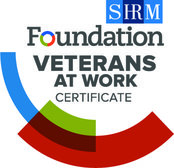Hot Tips from the SCA Nuts & Bolts Webinar
Updated 03/17/2023
Last week Mary Holmes of BOOST LLC and Nichole Atallah of PilieroMazza PLLC educated their webinar audience on SCA Compliance, Sick Time (as it pertains to FAR 52.222-43) and Common Challenges in complying with FAR 52.222-43 and SCA Health and Welfare as a whole.
While we encourage you to view the webinar in its entirety (which you can do here) we have compiled several of the takeaways for your perusal below, most of which pertains to SCA Health and Welfare and FAR 52.222-43.
Who is a ‘Service Employee’?
- Any person who is actively working in performance of a service pursuant to a contract covered by the SCA Health and Welfare (unless they qualify or exemption as bona fide executive, administrative, or professional employees under the FLSA)
- Independent Contractors* ARE included (including janitorial staff, health staff, security staff, etc.) *Independent Contractors are also required to be paid the SCA prevailing wage and fringe benefits. If you can classify someone as an independent contractor, you may be able to cash out the SCA benefits as long as they are appropriately dispersed to the contractor as expected.
Agency vs. Contracts Responsibility
|
Agency |
Contractor |
| Determine if SCA applies (DOL has final say) | READ everything carefully |
| Must incorporate FAR 52.222-41 (or 42) | Choose the correct labor classification |
| Everything must be IN the contract | Notify all employees and give them documentation of classifications |
| Area Wide Wage Determinations (WD) must be updated at each change and at least every 2 years | Pay at least the required hours, at the appropriate rates and benefits |
| Do not determine your own WD, use resources like sam.beta.gov or you could risk a price adjustment | Maintain records of all hour worked and all pay records |
SCA Health & Welfare
- Paid in addition to wages listed in the Wage Determination
- Could be paid either as cash or as bona fide benefits at the employer’s discretion
- Must be listed separately on pay records
- Applies to both Part-Time and Full-Time employees
- DOL increases H&W annually, however, employees are not entitled to an automatic increase unless there is a revision to the contract (but the contractor is entitled to a price adjustment)
Sick Leave
- Applies to employees performing on or in connection with a contract governed by the Executive Order whose wages are governed by the SCA, DBA, or Fair Labor Standards Act
- Accrued as follows: 1 hour per every 30 hours worked in connection with the contract
- Contractors can provide 7 days of paid sick leave at the beginning of the accrual year instead of based on hours worked
- Not required to pay out accrued unused sick leave at the time of job separation
- Sick leave can not count against H&W benefits
You can get more detail, as well as information on vacation and holidays, leave, bidding a CBA Wage Determination, DOL enforcement, Price Adjustments, FAR 52.222-43 and more in the full presentation.
If you’d like to have a more in-depth conversation regarding your specific needs as they pertain to contract bidding and working on contracts within the SCA umbrella, let’s schedule a chat. The professionals at BOOST provide knowledgeable insight into the most unique government contracting situations.





